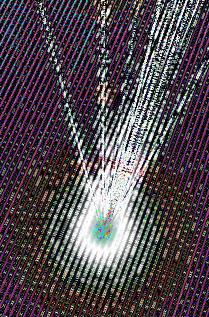Locals test quantum sandwich
 Engineers have demonstrated a new approach for converting ordinary laser light into quantum light.
Engineers have demonstrated a new approach for converting ordinary laser light into quantum light.
It is a useful step towards creating a device that can emit a single photon on demand.
The new approach led by researchers at Macquarie University uses nanometre-thick films made of gallium arsenide, which is a semiconductor material widely used in solar cells.
The thin films are sandwiched between two mirrors to manipulate the incoming photons.
The photons interact with electron-hole pairs in the semiconductor, forming particles called polaritons that have the properties of both photons and electron-hole pairs.
The polaritons decay after a few picoseconds, and the photons they release show distinct quantum signatures.
While these quantum signatures are weak at the moment, the work opens up a new avenue for producing single photons on demand.
“The ability to produce single photons on demand is hugely important for future applications in quantum communication and optical quantum information processing,” says Associate Professor Thomas Volz from the Department of Physics and Astronomy and the senior author on the paper.
“Think unbreakable encryption, super-fast computers, more efficient computer chips or even optical transistors with minimal power consumption.”
“Our approach could be much more amenable for massively scaling up, once we’re able to increase the strength of the quantum signatures we’re producing. We might be able to make identical quantum emitters from semiconductors by photon nanostructure engineering, rather than by direct materials engineering,” says Dr Guillermo Munoz Matutano, also from Macquarie and lead author of the paper.
“While real-world applications are still a fair bit away, our paper describes a major milestone that the polariton community in particular has been waiting on for the last ten to fifteen years. The regime in which polaritons interact so strongly that they can imprint quantum signatures on photons has not been accessed to date and opens up a whole new playground for researchers in the field,” Prof Volz said.
Their latest experiments have been published by the journal Nature.








 Print
Print